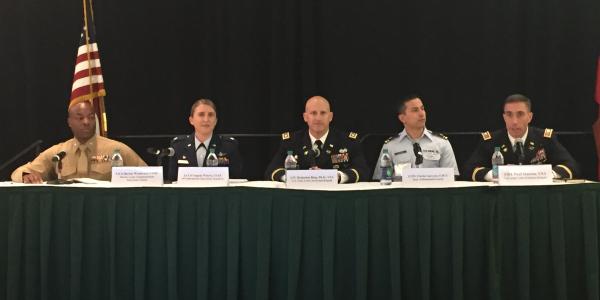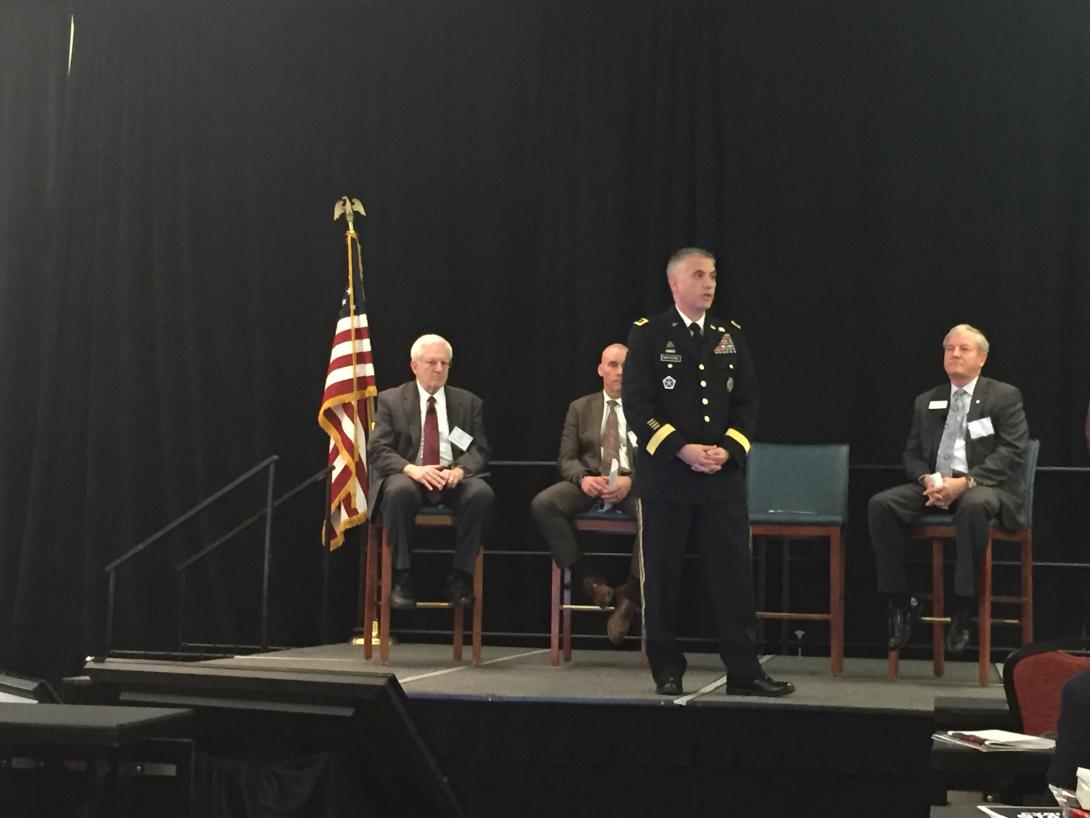Services Face Similar Challenges But Take Different Approaches to Cyber
Leaders from all five branches of the armed forces shared their perspectives on cyber education and training at an AFCEA symposium.
During the afternoon of the first day of AFCEA’s Cyber Education, Research and Training Symposium (CERTS), leaders from all five branches of the armed forces shared their perspectives on cyber education and training. Though all five laid out slightly different strategies and goals for their individual services, they all agreed they should leverage each other’s expertise and work together to figure out a way forward.
Joint force training was mentioned by every speaker as a key to success. Sharing curriculum and student space, especially with the U.S. Army Cyber Center of Excellence and Fort Gordon, will help the all the services move much faster on solving the nation’s cybersecurity problems, the panelists stressed.
Brig. Gen. Neil S. Hersey, USA, commandant, U.S. Army Cyber School, outlined the goals for the Army. The top tier goal is to improve the Army Cyber School, including the actual physical complex, as well as build on the curriculum currently being taught, grow uniformed talent and strengthen partnerships.
The Army learning model revolves around education and adult learning, making that learning student-centric and growth and group collaboration. “We want to make it less about technology and more about people who can solve problems,” said Gen. Hersey. “We need to train our force to be critical and adaptive thinkers.”
Col. Dom Ford, USMC, commanding officer, Marine Corps Communication-Electronics School, acknowledged that the Marines are not as experienced as the Army in cyber. The force is looking to leverage the Army’s capabilities and need to mature in the field.
“We are here in Augusta to leverage what the Army is doing,” Col. Ford said.
“While we have been fighting two wars globally, responding to crisis and deferring modernization, our adversaries have been adapting and modernizing for the future operating environment,” the colonel stressed.
Though they are facing challenges with manpower, training, technologies and equipment, and transition, the future Marine Corps cybersecurity work force will grow by a factor of 14 over the next five years, said Col. Ford.
The Coast Guard operates a bit differently than the other services since it is a military force as well as a law enforcement agency, said Capt. David “Lee” Petty, USCG, chief of the Office of Cyberspace Forces, Coast Guard Headquarters. The service normally operates under the Department of Homeland Security and follows its guidelines.
Even though its Office of Cyberspace Forces was just established in 2017, the Coast Guard has a specific cyber strategy for moving forward. The force has established cyberspace as an operational domain and set three strategic priorities: defend cyberspace, enable operations and protect infrastructure, said the captain.
Information warfare dominance is at the core of Navy operations and is considered the first force to work on and make a large investment in cyber. “The Navy has a history with cryptologic operations and success,” said Capt. William A. Lintz, USN, commander, Center for Information Warfare Training.
“The Navy has drawn itself a construct for a close collaboration of people who are cryptologic officers, general intelligence officers, information technology specialists and meteorological and oceanographic partners,” said Capt. Lintz. “We need all these areas to work closely for Navy cyber success.”
Today, the Navy’s primary cyber operations align closely with that of the National Security Agency (NSA). However, the force is looking to leverage what other services are doing for training and would consider sending sailors to the Army’s Cyber Center for Excellence and Fort Gordon, concluded Capt. Lintz.
Col. Robert S. Thompson, USAF, Office of Information Dominance and Office of the Secretary of the Air Force, stressed the importance of the agile airman model.
“Bringing someone in and giving them blacksmith apprentice-style training isn’t working for cyber,” stressed the colonel. The Air Force needs to better manage their its talent and play to airmen’s strengths.
“In order to maintain the viability of the service we need outside-the-box thinking,” Col. Thompson concluded.






Comments